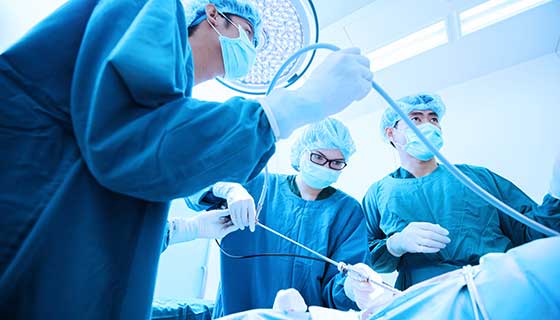Comprehending the Prices Involved with the Best Spine Surgeons in St Louis MO
Comprehending the Prices Involved with the Best Spine Surgeons in St Louis MO
Blog Article
A Review of Spinal Column Problems That Typically Lead To Surgical Therapies
Back conditions such as herniated discs, back constriction, and degenerative disc condition often demand medical treatments when traditional therapies fall short to reduce relentless signs and symptoms. Recognizing the subtleties of each problem and the corresponding surgical choices, such as discectomy or spinal blend, is critical for reliable administration.
Herniated Discs
Although many people with herniated discs might discover alleviation with conventional treatments, surgery ends up being a necessary consideration when signs and symptoms aggravate or persist - best spine surgeons in st louis mo. A herniated disc happens when the soft inner gel of a back disc extends via its outer layer, possibly leading and pressing nearby nerves to discomfort, tingling, or weak point in the extremities
Traditional management normally includes physical treatment, discomfort medications, and corticosteroid shots, which aim to lower inflammation and boost feature. Nonetheless, in cases where these methods stop working to reduce debilitating signs and symptoms, surgical choices may be explored.
One of the most usual procedure for herniated discs is a discectomy, which involves the removal of the herniated section of the disc to alleviate pressure on the impacted nerve origin. In much more severe situations, back blend might be needed to support the influenced vertebrae.
Individuals are advised to go over the potential risks and advantages of surgical procedure with their doctor to make a notified decision. Eventually, the objective of any type of medical treatment is to bring back function, reduce pain, and boost general quality of life for people experiencing herniated discs.
Spine Constriction
Back stenosis takes place when the areas within the back slim, causing enhanced stress on the spinal cable and nerves. This problem can establish in different regions of the spine, including the cervical and back areas, frequently due to age-related modifications, such as degenerative disc illness, arthritis, or thickening of ligaments.
Patients with spine stenosis might offer with signs that include discomfort, numbness, tingling, or weak point, mostly in the legs or arms. These signs can be worsened by activities that involve standing or strolling, frequently leading individuals to look for alleviation via conventional therapies like physical therapy, medicines, or epidural steroid injections.
However, when these non-surgical interventions fail to provide appropriate relief, surgical options may be thought about. Common surgeries for spine stenosis include laminectomy, which entails the removal of part of the vertebra to ease stress, and back fusion, which maintains the affected location. The decision to pursue surgical treatment is typically based upon the intensity of signs, the level of practical problems, and the overall health and wellness of the person. Prompt medical diagnosis and administration are vital to avoid further neurological concession and improve lifestyle.
Spondylolisthesis
Spondylolisthesis happens when one vertebra slides ahead over an additional, leading to misalignment of the spine. his comment is here This problem can result from various aspects, including hereditary problems, trauma, or degenerative modifications in the back. It is most frequently observed in the lumbar region, particularly at the L4-L5 and L5-S1 degrees.

Treatment options vary based upon the intensity of the slippage and the symptoms provided. Conservative measures, including physical therapy, pain administration, and activity adjustment, are commonly the very first line of defense. Nonetheless, when non-surgical strategies fail to relieve signs or when substantial nerve compression exists, surgical intervention might be necessitated. Surgical options can include spinal combination or decompression procedures, targeted at recovering positioning and reducing neurological signs and symptoms. Early medical diagnosis and ideal administration are vital for ideal outcomes in clients with spondylolisthesis.
Degenerative Disc Illness

The problem can be diagnosed via a mix of scientific assessment, imaging studies, and patient history. When these methods fail to offer sufficient relief, medical treatments may be thought about.
Surgical options for DDD may consist of spinal combination or artificial disc replacement, focused on maintaining the impacted segment and alleviating discomfort (best spine surgeons in st louis mo). Ultimately, the option of therapy is embellished, thinking about the severity of the here are the findings problem, client health, and way of life variables
Back Tumors

Spinal tumors can develop from various variables, including hereditary predisposition, ecological influences, and pre-existing medical problems. Patients might offer with a range of signs and symptoms, including local discomfort, neurological shortages, weakness, or changes in bowel you can try here and bladder feature, depending on the growth's dimension and area.
Surgical treatment may be called for to reduce symptoms, get a biopsy, or get rid of the tumor totally. The goal of surgical procedure is typically to unwind neural elements and stabilize the spinal column. Early detection and treatment are crucial for enhancing outcomes in people with spine growths.
Conclusion
In recap, spinal column problems such as herniated discs, spine constriction, spondylolisthesis, degenerative disc condition, and spinal tumors frequently demand surgical intervention as a result of their possible to trigger considerable pain and useful disability. While traditional treatments may supply temporary relief, medical choices end up being important when signs and symptoms aggravate or linger. Timely medical diagnosis and intervention play a crucial role in restoring function and enhancing the quality of life for afflicted people, underscoring the importance of thorough back care.

Report this page